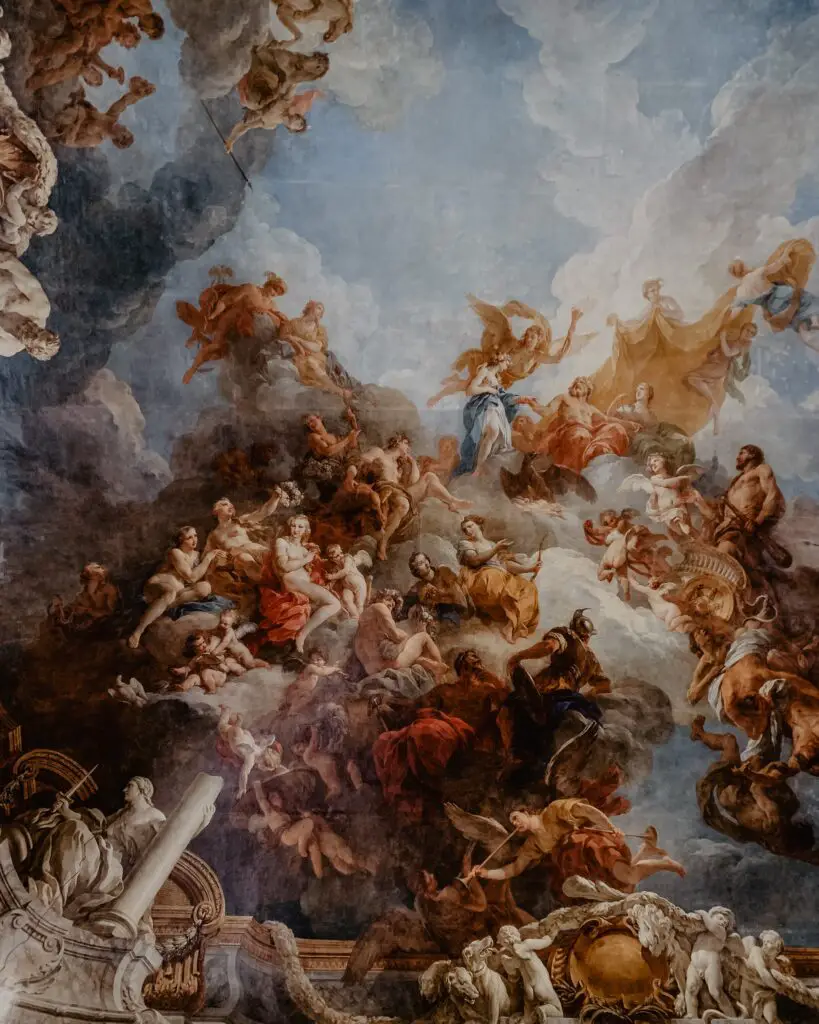Interested in learning about the fascinating world of ancient Greek? Look no further than this article, “Colors In Ancient Greek.” Delve into the rich linguistic history of ancient Greek and uncover the intricacies of how colors were perceived and named in this ancient civilization. Whether you are a language enthusiast or simply curious about the cultural nuances of ancient Greek, this article provides key insights into the language, opening up a whole new world of understanding. Discover the vibrant palette of the past and gain a deeper appreciation for the linguistic diversity that exists across time and culture.
Overview of Colors in Ancient Greek
Introduction
Colors played a significant role in Ancient Greek society, with deep cultural and symbolic meanings. The Greeks had a limited vocabulary for colors compared to modern languages, but their understanding and appreciation for the use of colors in various aspects of life were highly sophisticated. This article provides a comprehensive overview of colors in Ancient Greek, exploring their importance, vocabulary, symbolism, perception, usage, and evolution.
Importance of Colors in Ancient Greek Society
Colors held great importance in Ancient Greek society, influencing various aspects of life including art, fashion, religion, and rituals. The Greeks believed that colors had the power to communicate emotions, convey status, and even affect the behavior of humans and gods. Colors were used extensively in religious ceremonies, as well as in the portrayal of gods and goddesses. They were also a significant element in depictions of everyday life, such as pottery and frescoes, providing valuable insights into the Greek culture and aesthetics.
Limited Vocabulary for Colors
Unlike modern languages, Ancient Greek had a limited vocabulary for colors. The Greeks primarily categorized colors into three main groups: primary colors, secondary colors, and additional colors. Their understanding of colors was based on the observation of natural phenomena and the use of different materials for pigments and dyes. Despite the limited vocabulary, the Greeks made creative use of colors, assigning symbolic and metaphorical meanings to each shade. The nuances of colors in Ancient Greek were highly valued and carefully considered in various forms of art, literature, and everyday life.
See Also: Colors In Greek
Primary Colors
Basic Colors in Ancient Greek
The basic primary colors in Ancient Greek were black, white, and red. These colors held a significant place in Greek society and were deeply associated with various cultural and symbolic meanings. Black represented darkness, mourning, and the underworld. White symbolized purity, innocence, and divine aspects. Red, often derived from natural pigments like ochre, was associated with life, vitality, and passion. These basic colors formed the foundation for the Ancient Greek color palette and were extensively used in art, architecture, and clothing.
Greek Words Describing Primary Colors
The Ancient Greeks had specific words to describe primary colors. The word for black was “mélanos,” derived from which we have the term “melancholy” in English. White was called “leukos,” and red was referred to as “eruthros.” These words not only described the colors themselves but also carried cultural and symbolic connotations associated with each shade. The Ancient Greeks understood that colors were not just visual sensations but also powerful communicative tools, capable of evoking emotions and conveying complex meanings.
Symbolism and Meanings of Primary Colors
Each primary color in Ancient Greek held symbolic and metaphorical meanings that were deeply ingrained in the society. Black represented death, mourning, and the realm of the dead. It was often used to depict funerary scenes and tragic events in Greek art and literature. White symbolized purity, innocence, and the divine. It was associated with gods, goddesses, and sacred rituals. Red represented life, passion, and vitality. It was used to portray heroes, warriors, and moments of intense emotion in Greek mythology and literature. These symbolic associations shaped the usage of primary colors in various aspects of Ancient Greek culture.

Secondary Colors
Mixing Primary Colors in Ancient Greek
In addition to the primary colors, Ancient Greeks also mixed primary colors to create secondary colors. The most common secondary colors were purple, green, and orange. Purple was created by combining red and blue pigments, while green was formed by mixing yellow and blue. Orange, a color often associated with fire and warmth, was achieved by blending red and yellow. These secondary colors expanded the Ancient Greek color palette and were utilized in both art and everyday objects to enhance visual appeal and convey specific meanings.
Greek Words Describing Secondary Colors
The Ancient Greeks had specific words to describe secondary colors as well. The Greek word for purple was “porphura,” derived from the purple dye extracted from the murex shellfish. Green was called “prasinon,” and orange was referred to as “kirokómmion.” These descriptive words helped the Greeks articulate and differentiate between different shades and hues, enabling them to better express their artistic vision and convey the intended meanings and emotions.
Symbolism and Meanings of Secondary Colors
Secondary colors in Ancient Greek society also held symbolic and metaphorical meanings. Purple, associated with royalty, power, and wealth, was utilized in the garments of kings, queens, and important figures. Green represented nature, growth, and fertility, often seen in depictions of landscapes and agricultural scenes. Orange symbolized warmth, energy, and passion, and was used to depict the sun, fire, and lively festivities. The combined symbolism of these secondary colors added depth and visual richness to Ancient Greek art and material culture.
Additional Colors
Intermediate Colors in Ancient Greek
In addition to the primary and secondary colors, Ancient Greeks recognized intermediate colors. These colors were achieved by blending primary and secondary colors together or through the use of various natural pigments. Intermediate colors included shades like pink, gray, and brown. While not as prevalent as primary and secondary colors, these intermediate hues played an important role in providing visual variety and depth to Ancient Greek art, textiles, and aesthetics.
Greek Words for Additional Colors
The Ancient Greeks had specific words to describe the additional colors in their vocabulary. Pink was referred to as “rhodios,” gray was called “glaukos,” and brown was known as “xanthos.” These words allowed the Greeks to articulate the nuances and variations within each color group, contributing to their sophisticated understanding and application of colors in different forms of artistic expression.
Symbolism and Meanings of Additional Colors
Like all colors in Ancient Greek society, the additional colors held significant symbolic and metaphorical meanings. Pink, associated with femininity, grace, and tenderness, was often utilized in depictions of goddesses, love, and beauty. Gray symbolized neutrality, abstraction, and ambiguity, often seen in scenes representing transitions or supernatural beings. Brown represented earthiness, stability, and the natural world, commonly used in depictions of craftsmen, farmers, and the humble aspects of life. These additional colors provided a diverse visual language that enhanced the overall aesthetics and narrative elements of Ancient Greek artwork.

Color Perception in Ancient Greek
Cultural and Symbolic Significance of Colors
Colors had a deep cultural and symbolic significance in Ancient Greek society. They were believed to reflect and influence various aspects of life, including emotions, states of being, and societal hierarchies. The Greeks associated specific colors with gods, goddesses, and natural elements, attributing complex meanings to different shades and hues. Color symbolism in Ancient Greek culture was a means of communication, expressing abstract concepts, emotions, and cosmic forces through visual representation.
Color Associations in Ancient Greek Art and Literature
Ancient Greek art and literature were replete with color associations. Artists and writers used specific colors to convey particular moods, emotions, and themes. For example, red was often employed to depict scenes of love, passion, and war, while black represented mourning, death, and tragedy. These color associations were not arbitrary but were deeply rooted in the cultural and symbolic significance attached to each shade, allowing the audience to comprehend and engage with the intended messages and narratives.
Depiction of Colors in Ancient Greek Pottery
Ancient Greek pottery provides invaluable insights into the color perception of the time. Although most surviving pottery is now monochrome due to the fading of pigments over time, research and analysis have revealed the once-vivid colors used in their creation. Pottery was an essential part of everyday life in Ancient Greece and was decorated with various colors to enhance its aesthetic appeal and communicate specific narratives. The surviving fragments of colorful pottery showcase the skill and artistry of the Ancient Greeks in their mastery of color application and depiction.
Color Symbolism in Ancient Greek
Religious and Mythological Symbolism of Colors
Religion and mythology played a significant role in Ancient Greek society, and colors were intrinsically tied to their beliefs and narratives. Each god and goddess was associated with specific colors, often reflecting their attributes, domains, or personalities. For instance, blue was linked to Zeus, the king of the gods, symbolizing the vastness and power of the sky. Aphrodite, the goddess of love and beauty, was associated with the color pink, representing grace and femininity. These color associations in religious and mythological contexts provided a visual language that deepened the understanding and reverence for the divine in Greek culture.
Colors in Ancient Greek Gods and Goddesses
Colors were instrumental in the portrayal of gods and goddesses in Ancient Greek art and literature. Each deity’s depictions were carefully crafted with specific colors that symbolized their characteristics and attributes. For example, Apollo, the god of light, prophecy, and music, was often depicted with golden hair and radiant white clothing, emphasizing his connection to the sun and divinity. Athena, the goddess of wisdom and warfare, was often represented with a combination of blue and white, symbolizing her intellect and strategic prowess. These color choices not only enhanced the visual representation of the gods but also conveyed their unique traits and roles in Greek mythology.
Color Symbolism in Ancient Greek Rituals and Ceremonies
Ancient Greek rituals and ceremonies were heavily imbued with color symbolism. Different colors were associated with specific rituals and events, creating a visual spectacle that amplified the spiritual and communal experiences. White, symbolizing purity and divine presence, was commonly used in sacred ceremonies and sacrifices. Red, representing life and vitality, was often seen in festivals and processions celebrating gods and heroes. The deliberate incorporation of colors in these rituals and ceremonies added depth and meaning to the religious and social fabric of Ancient Greek society.

Color Usage and Techniques
Color Application in Ancient Greek Architecture
Colors played a significant role in Ancient Greek architecture, contributing to the grandeur and beauty of structures. Buildings and temples were adorned with vibrant hues that enhanced their visual impact and communicated important cultural and religious messages. For example, the Parthenon, the iconic temple in Athens, featured elaborate multicolored sculptures and decorative elements. These colors not only embellished the architectural designs but also invoked specific meanings associated with the gods, goddesses, and events that the structures were dedicated to.
Use of Colors in Ancient Greek Clothing and Fashion
Ancient Greek clothing and fashion were also deeply influenced by colors. The Ancient Greeks used different fabrics and dyes to create garments that exhibited a wide range of colors. The choice of colors in clothing was influenced by various factors, including social status, gender, and occasion. For instance, white robes were reserved for ceremonial and religious purposes, while colorful garments were worn in everyday life and festive events. The vivid and varied color palette in Greek fashion reflected the vibrancy, diversity, and aesthetic sensibilities of the society.
Pigments and Dyes in Ancient Greek Artwork
Ancient Greeks utilized a variety of pigments and dyes in their artwork to achieve the desired colors. Natural materials such as minerals, plants, and shells were used to create pigments. For example, red pigments were derived from minerals like ochre, while purple dye was extracted from the murex shellfish. These pigments were mixed with binders, such as egg yolk or wax, to create paint. Artists employed different techniques, such as fresco painting and tempera, to apply colors to various mediums, including pottery, murals, statues, and frescoes. These artistic endeavors showcase the Ancient Greeks’ mastery in color usage and their understanding of the relationship between pigments, materials, and visual effects.
Ancient Greek Color Idioms and Proverbs
Common Color-related Phrases and Expressions
Ancient Greek language also had a range of idioms and proverbs related to colors. These idiomatic expressions enriched the language usage and provided colorful and vivid descriptions in daily conversations and literature. For example, the phrase “black sheep” was used to describe someone who was considered an outcast or deviant. Similarly, the expression “rosy-fingered dawn” was used to describe the beautiful colors of a sunrise. These color-related idioms and proverbs reveal the Greeks’ appreciation for the nuances and imagery that colors can evoke in language.
Idiomatic Usage of Colors in Ancient Greek Language
Colors were often used metaphorically in Ancient Greek language, allowing for creative expressions and poetic descriptions. The Greeks used colors to convey emotions, qualities, and abstract concepts. For example, the phrase “green with envy” was used to describe extreme jealousy or covetousness. The color “golden” represented excellence, luxury, and high social status. These idiomatic usages of colors added depth and vividness to the Greek language, enabling speakers to convey complex ideas and emotions through evocative imagery.
Literal and Figurative Meanings of Color Idioms
Color idioms in Ancient Greek language had both literal and figurative meanings. They could be interpreted in a straightforward sense or used metaphorically to convey deeper messages. For instance, the phrase “blue-blooded” literally referred to someone of noble birth, associating their skin with veins visible through pale skin. Figuratively, this expression conveyed notions of aristocracy, refinement, and an elevated social standing. The dual nature of color idioms allowed for multi-dimensional linguistic expressions, enriching the language and providing a broader range of communicative tools for the Ancient Greeks.
Evolution of Color Terms in Ancient Greek
Semantic Shifts in Ancient Greek Color Vocabulary
The vocabulary for colors in Ancient Greek underwent evolution and semantic shifts over time. As the society and culture evolved, the Greeks expanded their color vocabulary to include new shades and nuanced descriptions. For instance, the term “porphura” initially referred to a deep purple hue derived from a specific dye, but later, it encompassed various shades of purple. Similarly, the word “xanthos” originally denoted a light yellow color but eventually included shades of brown. These semantic shifts reflect the Greeks’ evolving understanding and exploration of colors as they became more adept at extracting pigments and exploring new sources of color inspiration.
Influence of Ancient Greek Colors on Modern Language
The colors and their associated symbolism in Ancient Greek have had a lasting impact on modern language. Many color terms that originated in Ancient Greek are still used today in various languages, including English. For example, the term “chroma” in Greek means color, which is closely related to the English word “chromatic.” “Iridos” in Greek, meaning rainbow, is the root of the word “iridescent” in English. The foundational understanding and usage of colors in Ancient Greek continue to influence and shape the way we perceive and describe colors in contemporary language.
Comparisons with Color Terminology in Other Ancient Civilizations
The color terminology in Ancient Greek can be compared with that of other ancient civilizations. While each civilization had its unique understanding and application of colors, there are often similarities and shared symbolism across cultures. For example, red is associated with life, vitality, and power in many ancient societies, including Ancient Greece, Egypt, and China. Blue is often linked to the divine or spiritual in various cultures. Exploring the color terminologies and symbolic associations in different ancient civilizations provides a broader perspective on the universal human fascination with colors and their cultural significance.
See Also: Colors In Armenian
Conclusion
Legacy of Colors in Ancient Greek Culture
Colors held immense cultural and symbolic significance in Ancient Greek society, influencing various aspects of life, from art and fashion to religion and rituals. The Greeks had a sophisticated understanding of the power of colors to evoke emotions, convey messages, and communicate abstract concepts. The limited vocabulary for colors in Ancient Greek did not hinder their creative use and appreciation of colors but rather allowed for rich symbolism and metaphorical associations.
Continued Influence of Ancient Greek Colors Today
The legacy of Ancient Greek colors continues to shape our perceptions and usage of colors today. The symbolic and metaphorical meanings attached to specific shades and hues have transcended time and still resonate in contemporary language, art, and cultural practices. The vibrant and nuanced color palette of the Ancient Greeks continues to inspire artists, designers, and creatives around the world, perpetuating the timeless beauty and profound impact of Ancient Greek colors.
Appreciating Ancient Greek Color Aesthetics
Studying colors in Ancient Greek culture enhances our appreciation for their aesthetic sensibilities and the intricate relationship between colors, art, and everyday life. The Ancient Greeks’ mastery of color application and symbolism, as seen in their artwork, architecture, and language, serves as a testament to their artistic and cultural achievements. By understanding and celebrating the importance of colors in Ancient Greek society, we gain valuable insights into the richness and diversity of human expression throughout history.




